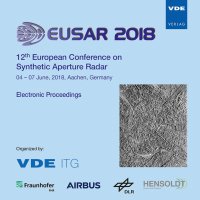A new look at Envisat ASAR range Doppler shift retrieval with the aim of reprocessing ten years of level-0 data
Conference: EUSAR 2018 - 12th European Conference on Synthetic Aperture Radar
06/04/2018 - 06/07/2018 at Aachen, Germany
Proceedings: EUSAR 2018
Pages: 6Language: englishTyp: PDF
Personal VDE Members are entitled to a 10% discount on this title
Authors:
Hansen, Morten W.; Park, Jeong-Won (Nansen Environmental and Remote Sensing Center, Norway)
Johnsen, Harald; Engen, Geir (Norut, Norway)
Abstract:
The synthetic aperture radar (SAR) Doppler centroid shift has been demonstrated to contain geophysical information about sea surface wind, waves and current at an accuracy of 5 Hz and pixel spacing of 3.5-9 x 8 km2. This corresponds to a horizontal surface velocity of about 20 cm/s at 35deg incidence angle. This paper presents a new and improved implementation of SAR Doppler shift processing routines developed to enable reprocessing of 10 years of SAR data available from the Envisat ASAR mission (2002-2012). The new retrievals are provided at higher resolution and better accuracy than previously obtained, to further allow combined use with Sentinel-1 and Radarsat-2 to build time-series of global sea surface velocity. Estimation of the geophysical Doppler shift from new SAR Doppler centroid shift retrievals are demonstrated, addressing key issues relating to geometric (satellite orbit and attitude) and electronic (antenna mis-pointing) contributions and corrections. Geophysical Doppler shift retrievals from one month of data in January 2010 and the inverted surface velocity are then addressed and compared to previously obtained results and surface geostrophic current. The retrieval of Doppler shift information from satellites, and sub-sequent signal partitioning into wind, wave, and current information, has potential for application within both operational oceanography (e.g., ship routing, offshore operations) and climate research.


